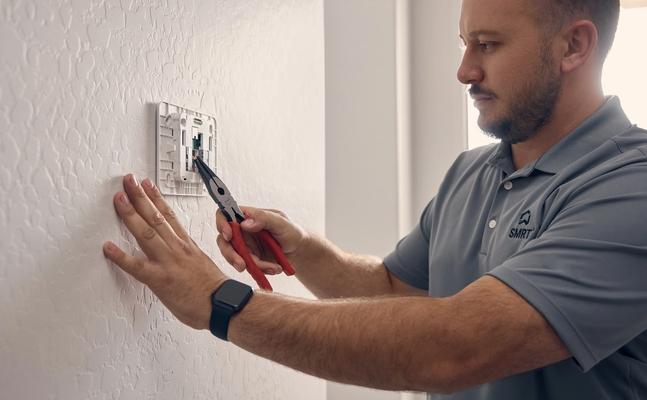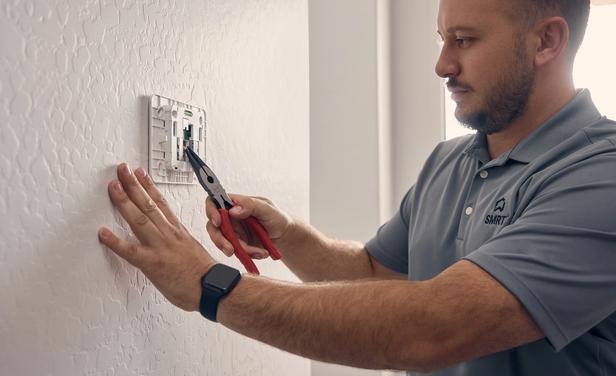Maintenance plays a critical role in attracting and retaining residents. According to Zego’s 2023 Resident Experience Management Report, 86% of renters consider overall property appearance 'very important' or 'essential' in their leasing decisions. But keeping your talented team performing at their best can be a challenge, especially when it comes to adopting new technologies.
The key to unlocking the full potential of your maintenance team and the resident experience lies in their successful adoption of smart tech solutions like SmartRent. Rental communities today struggle with retaining skilled maintenance staff and maximizing their efficiency. Community appearance and maintenance consistently rank as top resident experience challenges. Smart maintenance technologies can also tackle issues like communication with residents, smooth move-ins and move-outs, and customer service — but only if your team embraces these solutions and integrates them into their daily work.
Change can be difficult, and slow adoption can hinder the return on investment for smart tech. Here’s how to overcome these obstacles, minimize adoption time and maximize the benefits of smart technology for your team and your residents.

Get input early
One reason people resist change is that they feel a lack of control. New processes and tools can leave workers feeling unsure of how they fit into the new system, especially amid growing concerns about being replaced by AI and automation technologies. But if you communicate early about changes, your staff will be better prepared. And if you want to nip even more resistance in the bud, start by asking instead of telling.
Talk with your staff to better understand their greatest fears. Chances are, the things that worry them result in inefficiencies in your operations. Having to go back to the leasing office to pick up the next work order, for example, interrupts the flow of work and wastes time that could be spent on repairs.
Talking to staff about their pain points communicates that their job satisfaction is important to you and that your decision to change things up is for their benefit as much as yours. Plus, you’ll arm yourself with frontline knowledge to help you choose the right solution for your community. It’s a win-win.
Align maintenance goals with business goals
Most smart tech solutions automatically track and analyze data (or allow you to export and crunch it elsewhere). And that can lead to better business decisions for you. But this data can also help you encourage technology adoption.
Let’s say one of your goals is to reduce your overall vacancy rate. You use your property management software (PMS) (and perhaps a few other tools) to track a variety of metrics that affect vacancy rates, including time on market, marketing ROI, resident satisfaction and turnaround times. The data tells you that your strongest opportunity is to shorten turnaround times, so you set a goal to reduce them by an average of two days across your portfolio.
You know more efficient maintenance will be critical, so you translate your goal into actionable targets for your technicians. Then you show them how to track their progress using your new smart maintenance technology solution.
When technicians can track their own time to turnaround, they can see exactly how their work affects the company. And when you make improving their turnaround times the definition of success for their role, you motivate them to focus on that goal and use the technology that helps them achieve it.
Show technicians the benefits
Humans are creatures of habit, meaning we need motivation to change our behaviors. Achieving your goals isn’t enough. You have to tell workers what’s in it for them.
How will this new tech solution make their lives better? Pass along these benefits that other SMRT maintenance team members see:
Inventory and asset management
Fewer emergencies: Predict when equipment will fail so you can replace it first—and avoid the stress.
Asset look-up: When every asset has a unique identifier, you can look up its maintenance history instead of guessing how long it’s been since that air filter was replaced.
Check inventory: See if the part you need is in storage or needs to be ordered—without physically tracking it down first.
Resident communications
Get better work orders: Residents can add photos, videos and descriptions to maintenance requests so your team knows what to expect.
Prevent damage: Video call residents to discuss quick mitigation, like turning off water valves, until a technician arrives.
Boost customer service: Keep residents in the loop by alerting them when a technician enters their unit, diagnoses an issue or finishes a job.
Efficiency and job satisfaction
Keyless entry: You won’t have to carry around a bunch of keys or return to the office to check out a different set between jobs.
Mobile maintenance: See digital work orders on your smartphone and quickly update them on the fly.
Better assignments: Work orders are automatically matched to your skills and current location, so you get the best assignments every time.
Device monitoring: Low batteries and non-functioning devices automatically create work orders, so you spend more time maintaining devices than checking up on them.
Don’t let technology become a double-edged sword
As industry leaders like Giacomo Sinisgalli, CEO of RealEstateAuction.com point out, smart tech is a powerful tool that relies on skilled users to unlock its full potential. If your team isn’t comfortable with the new technology, they might revert to familiar yet less efficient methods.
Empower your staff for success. Choose a smart technology provider that prioritizes comprehensive training and reliable 24/7 support. This demonstrates your commitment to their success and ensures they have the resources to confidently navigate the new technology and maximize its benefits.
Fully integrate with existing solutions
Smart technology can do a lot to increase maintenance efficiency, but the way to see the most gains is by ensuring any new solution you adopt works with the tools you’re already using:
PMS
CRM
Self-Guided Tours
All smart devices
Market data platforms
When your solutions don’t talk to each other, your staff members become human translators between disparate systems. That means manually copying data from one platform to another, limited capabilities, and missed automation opportunities. You’ll leave a ton of efficiency gains on the table.
But if your tools communicate well without human intervention, your staff can complete these tasks once (or even automate them completely). Choose a solution that does it all—or one that integrates with the other tools you already use to avoid duplicate work.
Look to your team
Even the best property technology solutions designed for real estate might not perfectly fit every community's specific needs. While involving your team in the selection process is crucial (as we discussed earlier), there will still be unforeseen ways your staff adapts and utilizes the tools. Embrace this flexibility and empower them to experiment!
Encourage your team members to explore new workflows and best practices. Create an environment where mistakes and challenges are seen as learning opportunities. Be there to offer guidance and support as needed, but also allow them some autonomy to discover what works best for them.
Think of onboarding smart technology like welcoming a new team member. As an entrepreneur and former condo board president Pat Crosscombe emphasizes, successful adoption takes time, effort and patience. Don’t get discouraged by initial hiccups.
Communicate with tenants
Resistance from residents will add challenges for technicians. If residents won’t use digital maintenance requests or communicate using the app, it’s hard to convince your technicians to. So alongside your campaign to convince technicians to adopt your new tech, encourage resident adoption too.
Like staff members, some residents will hesitate to use your new solution because they’re intimidated or overwhelmed by it.
Tell residents about the benefits well before launch. Coach your staff members on communicating new tech to residents and answering questions. And give staff members a clear escalation path for technical and non-technical questions.
The benefits of smart maintenance technology for residents
Easy maintenance requests: Residents can submit requests in seconds on the resident app, including photos, videos, and notes.
Convenient communication: Residents receive regular updates on their maintenance requests, including when the technician enters or leaves their home and when work will be completed.
Quicker responses: Technicians can provide immediate remote assistance in emergencies—and resolve issues more efficiently.
Choosing the right smart maintenance technology
Smart tech can improve maintenance efficiency, deliver a better resident experience, and help leaders keep an eye on their assets—but only if people use it. You can combat resistance and speed adoption in many ways, but choosing the right solution from the start is critical. Choose one that:
Is built for real estate
Integrates with your current solutions
Delivers actionable data and insights
SmartRent is all of these things. Check out our Work Management solution—and learn how it pairs with other tools to deliver a seamless, efficient experience for you, your staff, and your residents.

